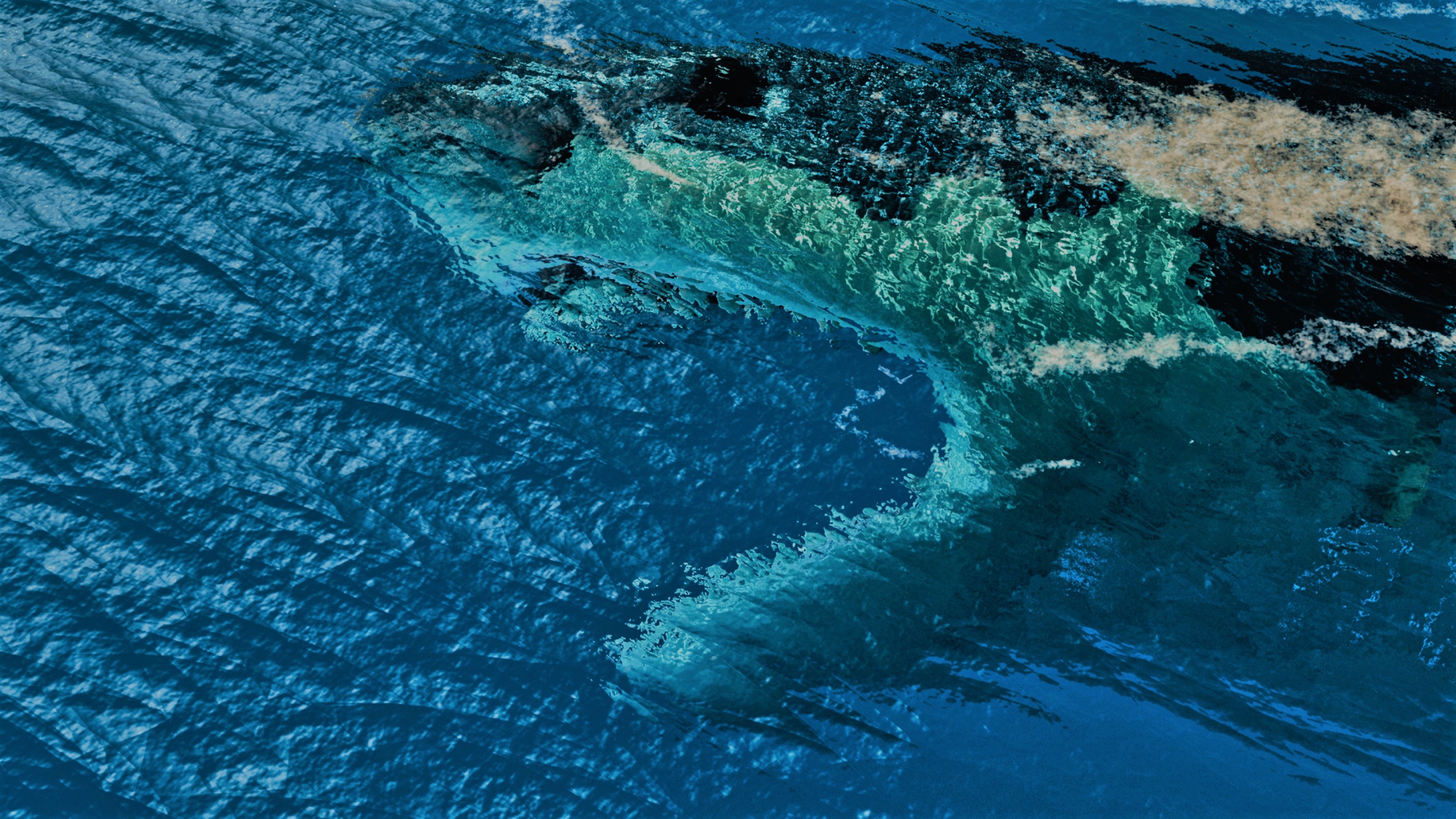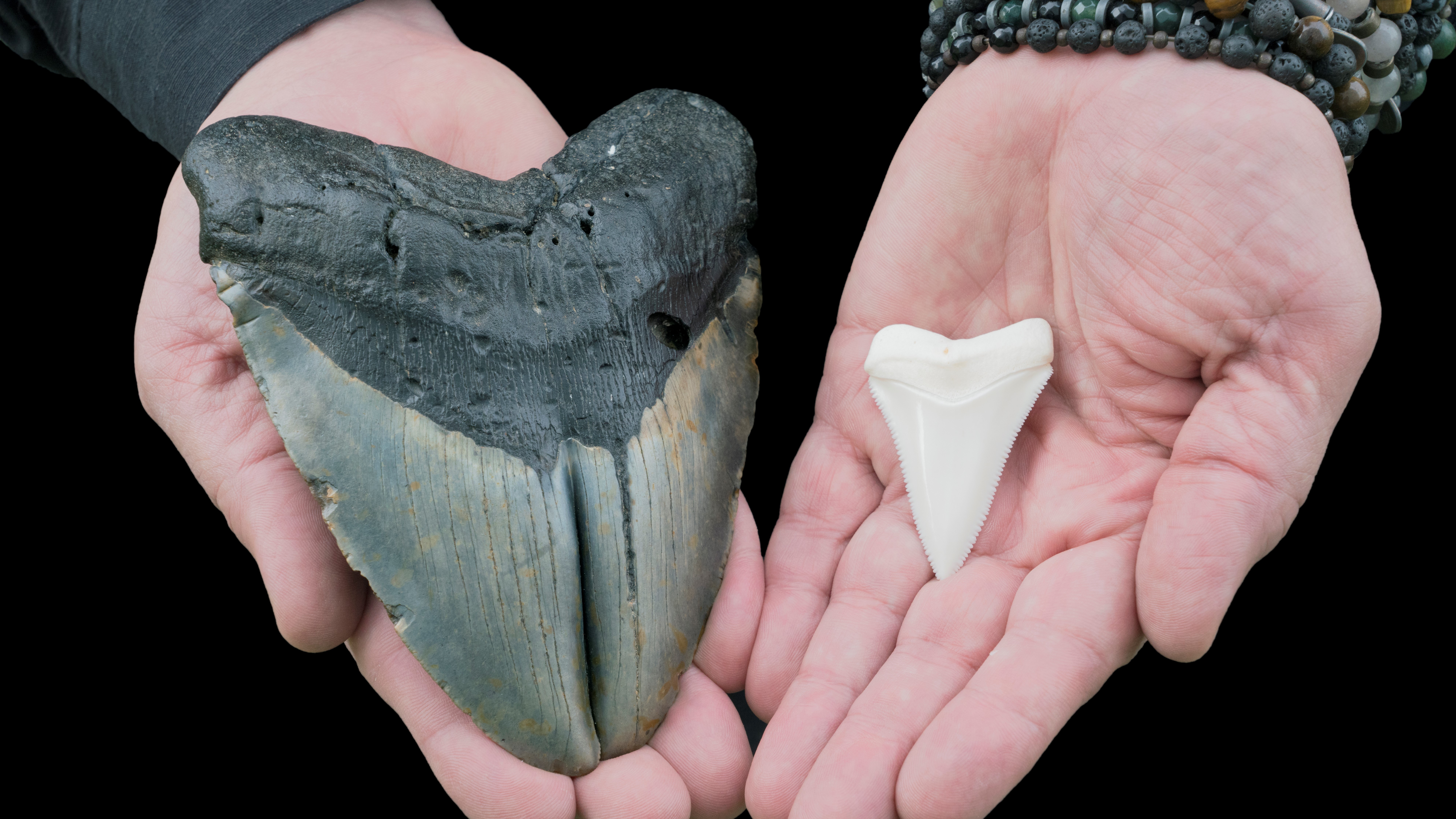Could the megalodon still exist today?
Megalodon once dominated Earth's oceans. Despite vanishing from the fossil record millions of years ago, rumors persist that these gigantic sharks are still alive.
From 20 million to 3.6 million years ago, Earth's oceans were dominated by an enormous species of shark called the megalodon. The scientific name, Otodus megalodon, means "giant tooth" — and it's easy to see why. With teeth up to three times the size of those of a great white shark (Carcharodon carcharias), the megalodon also reached lengths of 60 feet (18 meters) — making it the ultimate apex predator until it became extinct.
Yet rumors persist that these supersized sharks are still alive, with TikTok and YouTube videos speculating on how they might have survived gaining millions of views. Is it really possible for the megalodon to be alive today, lurking somewhere in the ocean?
Jack Cooper, a doctoral student at Swansea University in the U.K., is a member of the Pimiento Research Group, which studies marine diversity through time. He has spent years studying the megalodon — and says they are most definitely extinct.
"Any suggestion that megalodon potentially still exists in unexplored ocean regions is complete nonsense based on not a shred of credible evidence," he told Live Science in an email.
Related: Megalodon was fastest swimming shark ever and could devour an orca in 5 bites, 3D model reveals
Although the majority of the ocean hasn't been explored, Cooper said there are several reasons why the megalodon isn't still lurking in our oceans. Firstly, the food chain would look very different if the species was still alive.
"Megalodon was not only a very big coastal shark that would definitely have been seen by now, it was also an apex predator higher on the food web than any living marine predator. As such, it would've been a huge influence on ocean ecosystems," he explained.
Get the world’s most fascinating discoveries delivered straight to your inbox.
"Its disappearance had cascading consequences. Whales, one of their key prey items, got even bigger after megalodon went extinct with nothing around to eat them," he added. "Some of the biggest marine mammals today like the blue whale only evolved after megalodon went extinct. So, in short, the modern day food web has partially been shaped by megalodon not being there."
Megalodon in the Mariana Trench?
Scientists are still learning about some of the most mysterious and unmapped regions of our oceans, particularly the deepest areas like the Mariana Trench, which stretches down 35,876 feet (10,935 m) below the ocean surface. Although it's exciting to imagine giant sharks living secretly in the depths, Cooper said they wouldn't be able to survive in such an inhospitable environment.
"The deep sea would be totally unsuitable habitats for such a big apex predator," he said. "We find deep sea sharks all the time and none come anywhere close in size to a 20-meter [65 feet] giant. As megalodon was likely consuming fairly large prey, those smaller animals wouldn't be great sources anyway. The Mariana Trench has mostly microscopic life that wouldn't even feed one megalodon, let alone a secret population."
Kenshu Shimada, a paleobiologist at DePaul University in Chicago who has studied megalodon, said that claims these massive sharks still live somewhere today have never been substantiated.
To understand why the megalodon would not be able to survive in today's oceans, it can help to understand how it went extinct. Although the exact cause is unknown, Shimada said there are several dominant theories.
"A couple of major hypotheses include extinction due to climate change or competition with the great white shark that emerged a few million years ago. It is also possible that the extinction could have been caused by a combination of multiple factors."
Cooper agrees that climate change may be a key reason why the megalodon went extinct. He said the megalodon's extinction has largely been attributed to a reduction in sea level from the Pliocene epoch (5.3 to 2.6 million years ago).
"That reduction would have dramatically affected the coastal habitats of both the megalodon and their prey," he said. "It meant less area for them to live in and less food availability to replenish the huge amount of energy they needed to justify their enormous sizes and active predatory lifestyles. Today's sea levels generally remain much lower than the Pliocene, so such conditions are far from ideal for them."
Finally, if megalodon were alive today, we would likely know about it as they would be under threat from poaching — much like the great white shark. "We would have seen crystal clear evidence of megalodon," Cooper said. "As humans kill as many as 100 million sharks every year, with larger sharks being at particular risk to this, they would probably not be able to survive us rather than the other way around."

Lydia Smith is a health and science journalist who works for U.K. and U.S. publications. She is studying for an MSc in psychology at the University of Glasgow and has an MA in English literature from King's College London.




